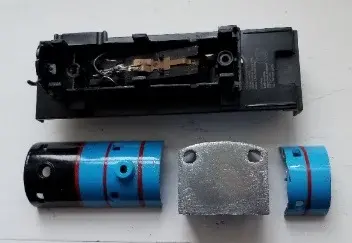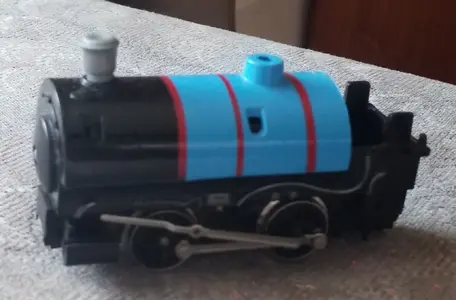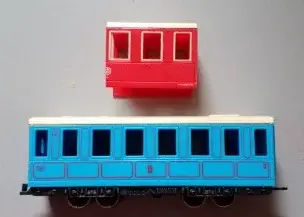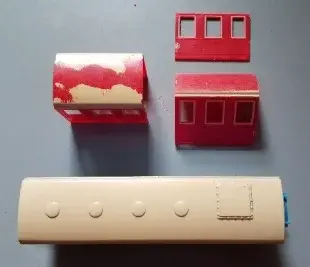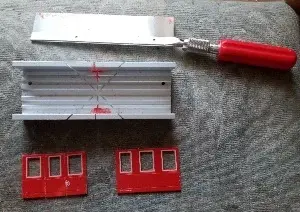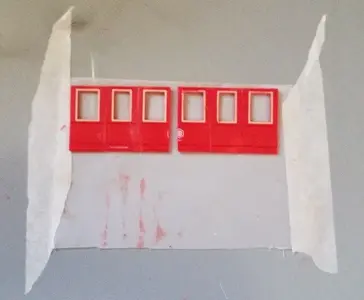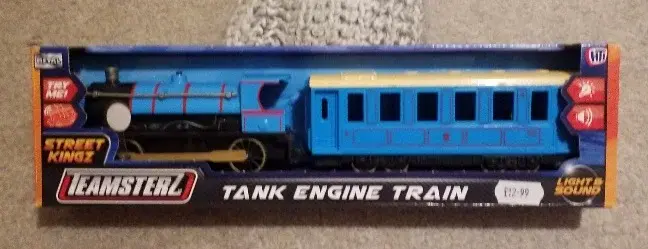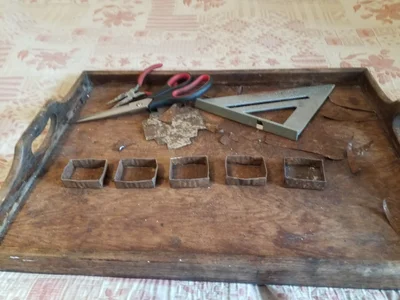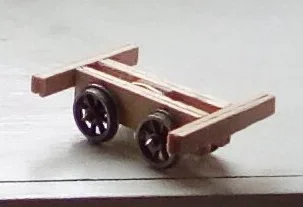Now it is also possible to use a 4 wheel chassis with this little loco. We call 4 wheeled locos where all four wheels are coupled and therefore driven 0-4-0's, and the tanks carrying water are either side tanks (Know as just T), saddle tanks (Known as ST), pannier tanks (Known as PT), well tanks within the frames (Known as WT) etc, etc. Locos with tenders where the water is carried on the tender as well as the coal or wood etc we call by not adding letters after the 0-4-0 wheel arrangement designation, BUT if I put a tender on with this locomotive, it's watertank is on the loco, so it still becomes an 0-4-0ST which is what it would be if it didn't have a tender, as technically it can operate on its own even though one may not get so far without so much coal!
Now if I use a 6 wheel chassis, it becomes an 0-6-0 etc. The 0 part on either side show that there are no additional wheels ahead or behind the driven wheels. If there was an additional pair of unpowered wheels ahead of 4 driving wheels it would become a 2-4-0 and if the additional wheels are at the rear instead it becomes an 0-4-2 etc. There are also some locos with more than one pair of coupled driving wheels so if there are 4 coupled wheels (Joined with coupling rods) at one end and 4 coupled wheels at the other end such as with a fairlie or a garat design then we have an 0-4-4-0 etc.
Now most diesels and electric locomotives have driven wheels that are not coupled with a coupling rod, so a different way is used to represent them, A, Bo, Co etc being used to represent each powered set of wheels and 1, 2 etc for each unpowered wheels, so while a steam locomotive with four powered wheels at each end may be an 0-4-4-0, a diesel without connecting rods having 8 powered wheels into sets of 4 wheels will be classed as a bo-bo. A Co-Co will be a 12 wheeled diesel or electric locomotive but not every 12 wheeled loco will be classed like that, as exceptions such as the class 31 in the UK has only its outer wheels on each bogie powered with the centre wheels unpowered, so it becomes an A1A-A1A instead. Confused? Well, some other countries and even in the UK certain railways used their own classification just to confuse things!
Anyway. Back to exploring my model locomotive idea(s). Now this can be built in 4 wheel form as an 0-4-0ST instead of a 6 wheeled form as an 0-6-0ST.
Below shows the possibilities...
[As can be seen, one can build this with or without a tender, with or without a cab and with the pistons in a raised or lowered position thus offering many possibilities in both the larger narrow gauge scales and the smaller H0 or 00 standard gauge scales... The choice is yours if you want to build one...]
